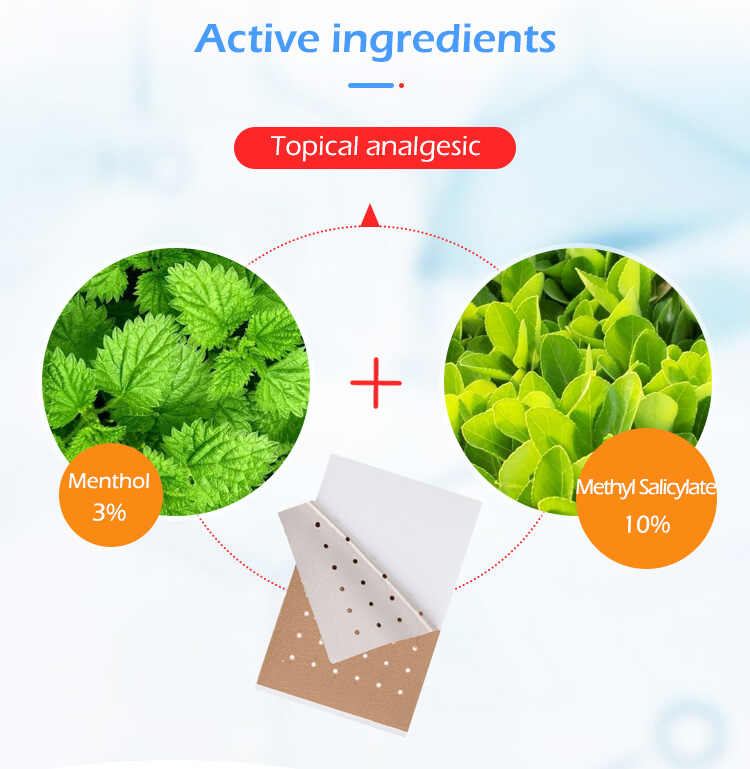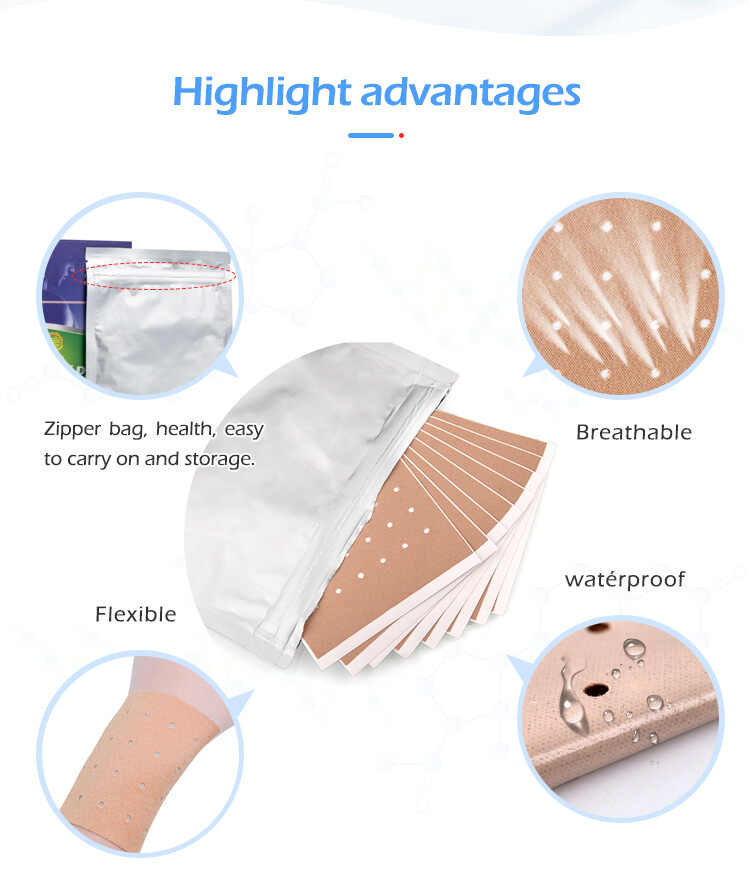Regulatory Compliance of Heat Therapy Patch OEM in Different Markets: Ensuring Safe and Effective Products
When you’re considering partnering with a Heat Therapy Patch OEM (Original Equipment Manufacturer), one of the most critical factors that can determine the success of your business is ensuring that the product complies with regulatory standards in different markets. Compliance is not just a matter of legal necessity, but also of maintaining your reputation as a reliable and trusted brand. In this article, we will discuss the various regulatory requirements for Heat Therapy Patches across different regions, the role of Heat Therapy Patch Manufacturers and Suppliers, and how Custom Heat Therapy Patches and Private Label Heat Therapy Patches can navigate these regulations.

1. Understanding Heat Therapy Patch Compliance
Heat therapy patches are used to provide relief from muscle pain, joint stiffness, and other discomforts through the application of heat. To ensure these patches are safe and effective, they must comply with the regulatory standards established in each market where they are sold. These standards cover a range of factors, including safety, efficacy, ingredient usage, packaging, labeling, and manufacturing practices.
For Heat Therapy Patch Manufacturers, OEM partners, and suppliers, understanding and adhering to these regulations is essential not only to avoid legal repercussions but also to ensure customer trust. When sourcing Custom Heat Therapy Patches or Private Label Heat Therapy Patches, manufacturers need to be well-versed in the regulations of each market they are targeting.
2. Regulatory Requirements by Region
United States: FDA and CPSC Regulations
In the United States, Heat Therapy Patches are primarily regulated by the U.S. Food and Drug Administration (FDA). These patches are classified as medical devices, which means they must adhere to strict FDA guidelines. If the heat therapy patch makes claims related to pain relief or therapeutic benefits, it falls under FDA’s medical device regulations.
Key FDA regulations that impact Heat Therapy Patch Manufacturers include:
Class I and Class II Device Classification: Heat Therapy Patches that do not make therapeutic claims may be classified as Class I devices (low risk), whereas those making specific medical claims will be considered Class II devices (moderate risk). Class II devices require a 510(k) premarket notification submission to the FDA for approval.
Good Manufacturing Practices (GMP): Manufacturers must comply with GMP standards to ensure the consistency, quality, and safety of their products. This includes proper testing, labeling, and documentation.
Labeling Requirements: The FDA mandates specific labeling for over-the-counter heat therapy patches, which must include usage instructions, warnings, and ingredient lists.
In addition to FDA regulations, Heat Therapy Patch Suppliers must also comply with the Consumer Product Safety Commission (CPSC), which governs the safety of consumer products. For example, any patches that contain potentially hazardous substances must adhere to safety protocols to avoid risks such as burns or allergic reactions.
European Union: CE Marking and MDR Compliance
In the European Union, Heat Therapy Patches are regulated under the Medical Devices Regulation (MDR) and must obtain a CE marking before they can be sold. This marking indicates that the product meets EU safety, health, and environmental protection standards.
Key considerations for Heat Therapy Patch OEM manufacturers include:
Risk Classification: Similar to the FDA system, the European market classifies medical devices based on risk. Heat Therapy Patches that make therapeutic claims must undergo an evaluation process with a Notified Body (an organization designated by the EU).
Clinical Evaluation: For medical device classification, manufacturers must provide evidence of the clinical efficacy of the heat patches.
Post-market Surveillance: Manufacturers are required to maintain records of any adverse events related to the patches and report them to regulatory authorities.
Asia-Pacific: Varying Regulations Across Markets
The regulatory landscape in the Asia-Pacific region varies greatly depending on the country. In China, Japan, South Korea, and India, the regulation of Heat Therapy Patches is overseen by their respective health and safety authorities, and compliance requirements may be more stringent for products marketed as medical devices.
For instance:
Japan has stringent regulations under the Pharmaceutical and Medical Device Agency (PMDA), and manufacturers must obtain approval for medical devices and demonstrate the efficacy and safety of the product.
China follows the National Medical Products Administration (NMPA), and similar to other markets, heat patches that claim therapeutic benefits must comply with medical device laws.
In these markets, Private Label Heat Therapy Patches often face additional hurdles, as local regulatory bodies might require foreign brands to prove the safety and efficacy of their products through clinical trials or third-party assessments before approval.
Australia: TGA Regulations
In Australia, Heat Therapy Patches fall under the Therapeutic Goods Administration (TGA), which governs all therapeutic products. For products making medical claims, manufacturers must submit them for evaluation and approval. Additionally, the patches must meet Good Manufacturing Practice (GMP) standards and include accurate labeling, particularly in relation to risks, instructions, and the intended therapeutic effects.
3. The Role of Heat Therapy Patch Manufacturers, OEMs, and Suppliers
When partnering with a Heat Therapy Patch OEM, it’s crucial to select a manufacturer with extensive experience in regulatory compliance. A reliable Heat Therapy Patch Supplier will be familiar with the regulatory requirements of the target market and can assist with product approvals, testing, and documentation.
Here are key points to consider:
Certifications and Accreditations: Ensure that the OEM partner holds relevant certifications, such as ISO 13485 (for medical devices) and GMP compliance. This guarantees adherence to internationally recognized quality standards.
Testing and Documentation: The OEM should provide evidence of product testing, including safety, stability, and performance tests. This is critical for compliance with FDA, EU, or other local regulations.
Regulatory Support: Some suppliers offer regulatory support services, helping navigate the complex process of certification and approval, especially when it comes to Custom Heat Therapy Patches or Private Label Heat Therapy Patches.
4. Why Compliance Matters for Custom and Private Label Heat Therapy Patches
For businesses seeking to launch Custom Heat Therapy Patches or Private Label Heat Therapy Patches, regulatory compliance is even more critical. While creating a unique product allows businesses to stand out in the market, it also places additional responsibility on them to ensure that the product is safe, effective, and compliant.
Customization and Testing: Custom formulations or unique packaging may require additional regulatory steps, including clinical evaluations and regulatory submissions, especially if new ingredients or delivery systems are involved.
Private Labeling: As a private label partner, ensuring that your OEM meets regulatory standards is essential to protecting your brand and avoiding legal issues. You’ll be held accountable for the product’s compliance, even if you’re not the manufacturer.
5. Conclusion
Navigating the regulatory landscape for Heat Therapy Patch OEMs can be complex, but it is a crucial step for success in international markets. Heat Therapy Patch Manufacturers, suppliers, and OEM partners must ensure that their products comply with the laws and regulations of the target market, including safety, efficacy, and labeling requirements. Whether you’re considering Custom Heat Therapy Patches or Private Label Heat Therapy Patches, ensuring that your product meets regulatory standards will help you build a trustworthy brand and avoid costly legal issues.
Related Questions and Answers
Q1: What is the process for getting a Heat Therapy Patch approved in the US?
A1: In the U.S., Heat Therapy Patches that make medical claims need FDA approval, typically via a 510(k) submission. The patch must meet safety and efficacy standards, undergo clinical testing, and comply with GMP regulations.
Q2: Do Heat Therapy Patches require CE marking for the European market?
A2: Yes, any Heat Therapy Patch marketed as a medical device in the EU requires a CE marking, which indicates that the product complies with the EU Medical Devices Regulation (MDR).
Q3: Can I sell Private Label Heat Therapy Patches in multiple regions?
A3: Yes, but you must ensure that the product complies with the regulatory requirements of each region (FDA in the U.S., CE marking in the EU, etc.), including testing, labeling, and approval processes.
Q4: How can I ensure my Custom Heat Therapy Patch complies with local regulations?
A4: Work with an experienced Heat Therapy Patch OEM that understands the regulations of the target market. Ensure that the manufacturer provides necessary certifications and testing documentation to meet local requirements.
Q5: What are the main regulatory concerns for Heat Therapy Patch manufacturers?
A5: The main concerns include safety, efficacy, labeling, and packaging requirements. Compliance with GMP and specific regulatory approvals, like FDA clearance or CE marking, is essential.






